If you are worried that your pizza dough is over proofing then you’re in the right place. In this article we’ll go over what over proofing is and I’ll show you just how easy it is to fix.
Well yes, pizza dough can be over proofed. In the most extreme cases, over proofed dough can lead to a dense and tough dough that makes poor quality pizza.
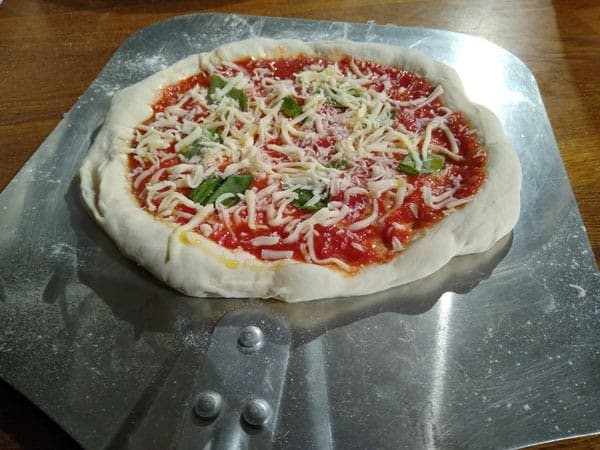
However, if dough is only just starting to over prove then it’s not so bad. You can still make nice pizza with dough that is slightly over proofed. But it will be more difficult to shape and it won’t be quite as good as it could’ve been.
It’s worth noting that over proofed dough is usually not as bad an under proofed dough. Over proofed dough should still have some nice air in it which helps to produce a light and airy pizza.
The best way to tell if pizza dough is over proofed is to look at the dough. There are some clear visual indicators that can tell you everything you need to know instantly.

Visual indicators of over proofed pizza dough include:
Let’s go into these in more detail:
Firstly, over proofed dough will be very large, usually more than double it’s initial size.
Of course, we want the dough to rise as this will help us to achieve a light pizza. However, if the dough rises too much, the pizza will be difficult to shape.
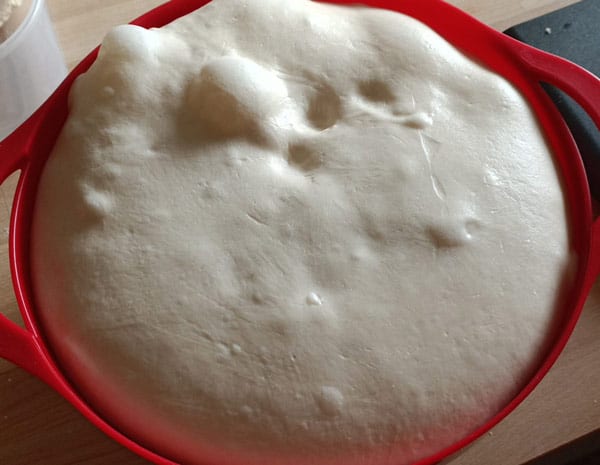
As a rule of thumb, we want the dough to rise to about 1.5 – 2 times it’s size. Anything more than this is a clear indicator that the dough is over proving.
A pizza dough that contains large bubbles is a clear sign of over proving.
Small bubbles in pizza dough are a great thing. These help to create a lovely light and airy pizza as the dough cooks.
But large bubbles can have the opposite effect. When you shape the pizza these bubbles will probably pop so you end up losing the air that had developed.
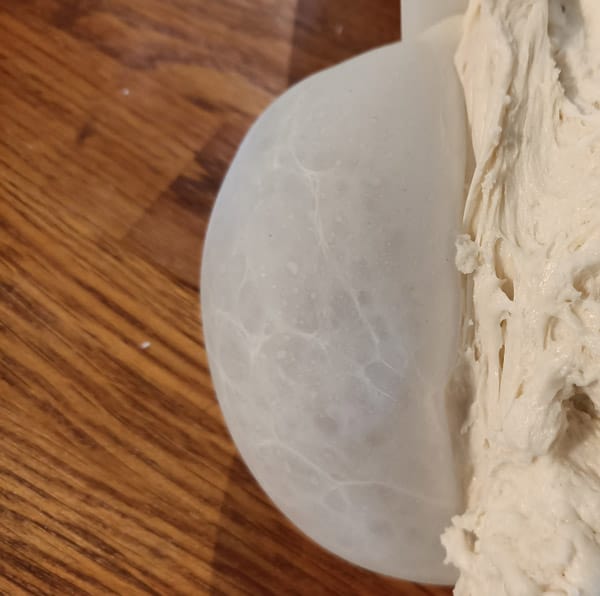
In fact, it may actually be wise to pop any large bubbles since these can lead to an uneven cook and texture. You may get a nice air pocket where the bubble was but you may find the dough around it is dense.
If your pizza dough has lost it’s nice round shape then chances are it’s over proofed.
As dough over proofs it expands tremendously and it loses a lot of strength. The combination of these two factors leads to dough balls that no longer look like balls!
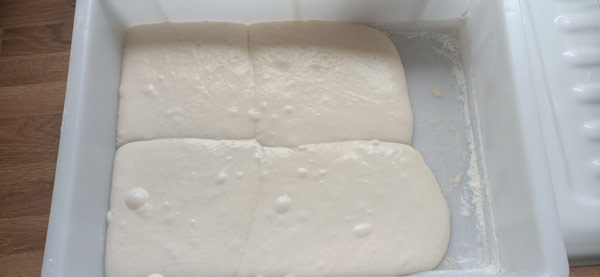
Note: Pizza proofing boxes are ideal for proofing your dough balls. You can check out the prices on Amazon here.
Over proofed dough can actually look impressive but it’s almost always difficult to work with. It’s usually difficult to get a nice round shape. Additionally, it will tear easier than it should.
All in all, it’s a nightmare to shape!
There’s another great way to tell if pizza dough is over proofed and it’s known as the poke test. It’s really easy.

All you need to do is gently poke a dough ball with one finger and then quickly remove the finger. If the dough stays pressed in and doesn’t spring back at all then it’s likely over proved.
Ideally, we’re looking for the pressed dough to slowly return back. In general, it should return about half way back towards the surface. This shows that the dough has some nice air in it whilst also retaining strength.
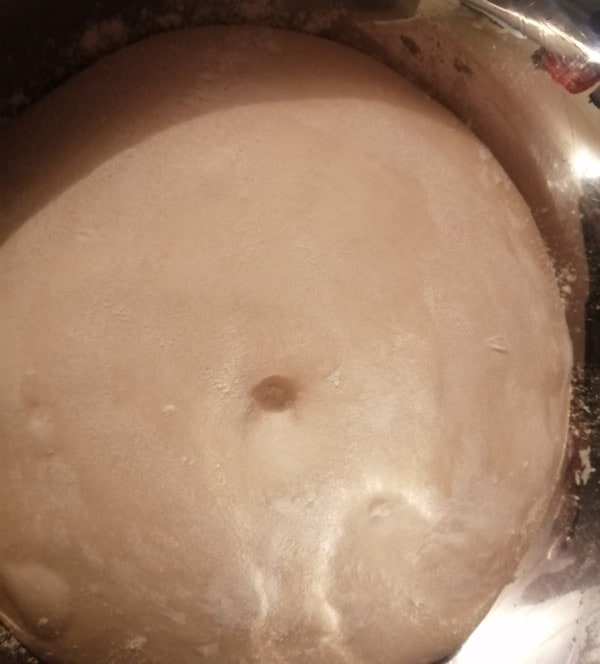
If the dough springs right back then this is a sign that the dough is actually under proofed. The dough is strong since it springs right back but it hasn’t developed any air yet. In this case it just needs a little longer to prove.
As a side note, if your dough is particularly sticky, just sprinkle a little flour on the dough before carrying out the poke test.
In conclusion, although the poke test can be useful, it’s not the best way in my opinion. I think the visual signs should tell you all you need to know and the poke test can just clarify this.
So I would not rely solely on this test to tell if your dough is over proofed. I would just use it as a tool to help. It can be useful if you’re unsure and you’re still learning about dough.
In a word, yes. You can use over proofed dough and you can still achieve good results with it.
However, your pizza won’t turn out as good as it could’ve done if it had been properly proved. Over proofed dough is more difficult to shape, easier to tear, and will usually lead to pizza that is too thick and dense.
Over proofed dough loses it’s strength and this is the main problem. Pizza dough that is difficult to shape is no fun!
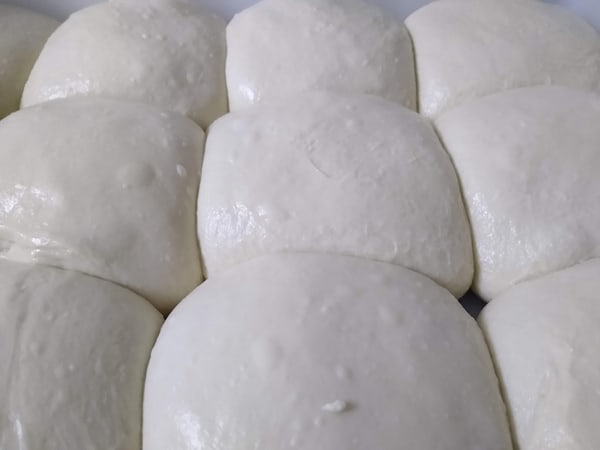
Also, it may seem counter-intuituve that over proofed dough leads to dense pizza. Surely it has a lot of air in it? Well, it does. But during shaping a lot of this air will be lost. Over proofed dough often deflates during shaping and this leads to a dense pizza, not a light and airy one.
The best option is to use the dough before it becomes over proofed. But this isn’t always an option. Sometimes it’s too late or it’s not convenient to make the pizza right away.
Luckily, there’s an easy way to fix overproofed pizza dough!
The simple way to fix overproofed pizza dough is using a technique known as knocking back. It may sound strange but don’t worry, knocking back is much easier than you think!
Knocking back is simply a fancy term for removing the air from dough. When this happens the dough will prove again.
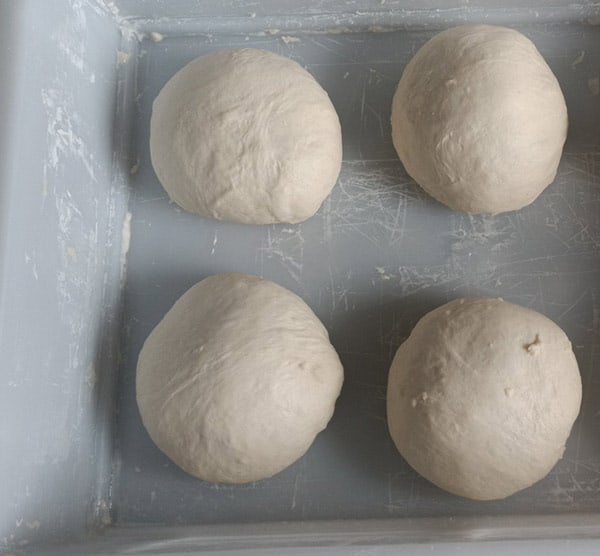
The idea is that when the dough rises a second time, you use it before it overproves. This allows you turn your overproofed dough into perfectly proofed dough.
Pizza dough doesn’t have to be knocked back, it’s just a tool that you can use if required.
But if your pizza is either over proofed or over proving (soon to be over proofed) then you can knock it back. This effectively sets your dough back, hence the name knocking back.
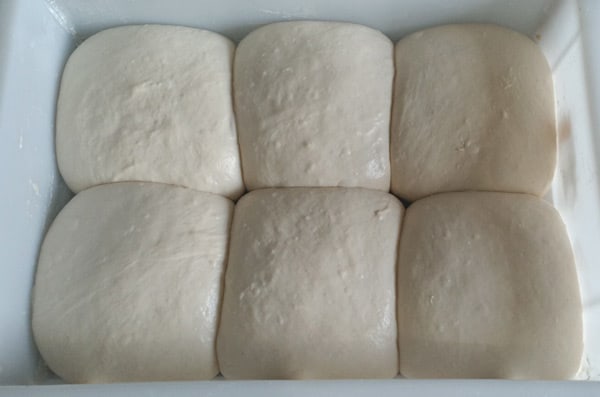
The beauty of it is that knocking back buys you time and allows you to control the proving of your pizza dough.
If your dough is over proofing then you should definitely knock it back. This will save you from a whole host of problems, particularly when it comes to shaping.
If your dough is looking good though, then there’s no need to knock back. You can just leave it to prove as normal.
However, some people decide to incorporate knocking back into their normal pizza making process. What it can help to achieve is a more even texture in the pizza, particularly in the crusts.
In general, the more you knock back, the more even texture you will create. But, this will come as the expense of large holes in the crust. It just depends what you’re looking for.

Some people enjoy trying to achieve a more even texture, with less large holes in the crust. Knocking back can certainly help with this.
For me, I quite like a rustic pizza with uneven air holes in the crust. Big holes look impressive and they create a very light texture. So I tend to only use knocking back as a way to save dough that is over proofing.
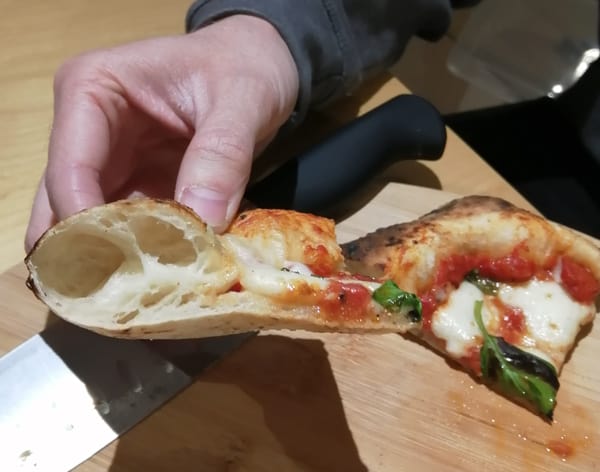
But knocking back dough once if needed won’t have a huge impact on the dough. If you knock it back several times then it may.
At the end of the day, there are many different ways to make pizza. Feel free to experiment and see what you prefer.
But in my opinion, the best way to use knocking back is simply as a tool to control proof time. I will generally use a little more yeast than required in my dough. Because if the dough is overproving I can simply knock it back. Whereas if my dough is underproving there isn’t much I can do about it.

Don’t massively overdo it on the yeast though! I might add only 10% more than I think I need, just to ensure good fermentation (proofing).
There’s many ways to knock back pizza dough and you can just do whatever works for you. All you are doing is removing the air from the dough.
Ways to knock back include:
Really, you can do whatever you want. Just find what works best for you.
For example, with heavy dough the easiest way is probably to turn it onto the bench and use the heel of your hand or your fist. But if the dough is light then it might be easier to pick it up and squeeze the air out.
If you have already split your dough into balls and they’re overproving then I would recommend picking them up one at a time. You can squeeze the air out and then quickly reball.
There is some judgement involved here. How aggressively you knock back will depend on how much your dough has over proofed and when you want your dough to be ready.
On the extreme end of the spectrum, let’s say your dough is really overproved and you don’t need it to be ready until 6 hours time. In this case, you’ll probably want to remove as much air from the dough as possible. This will set the dough right back so that hopefully it’s perfect in about 6 hours time.
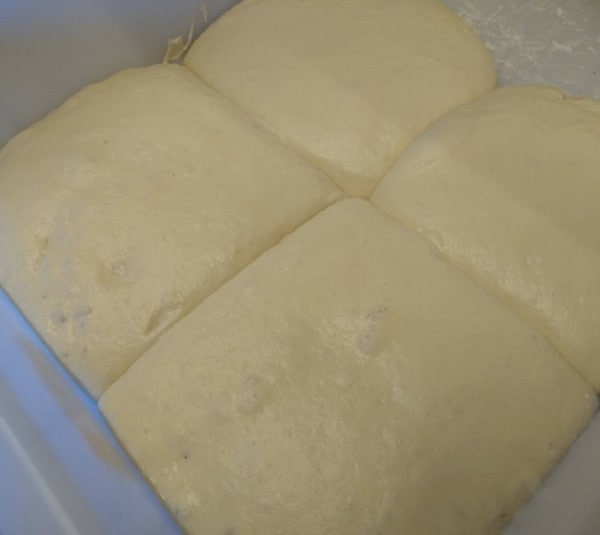
In contrast, let’s say your dough is only slightly overproved and you want to use it in 1-2 hours. In this case you’ll need to be gentle with the dough. You don’t want to remove too much air or the dough will take too long to prove.
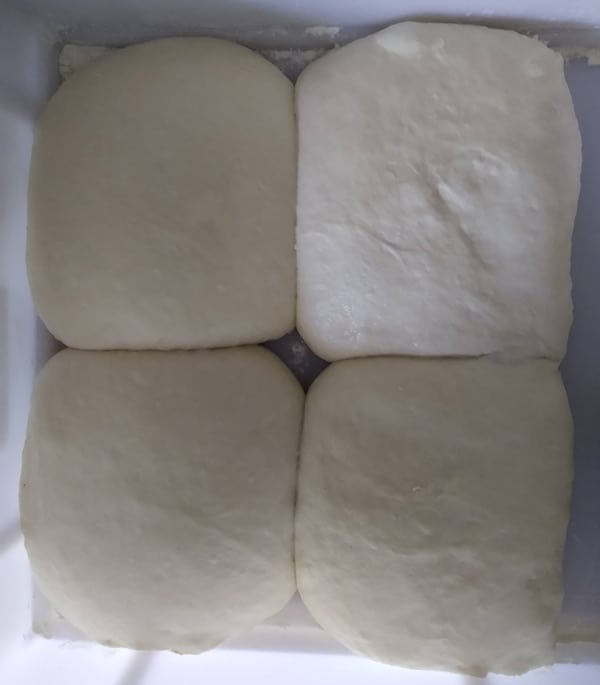
At the end of the day, it comes down to experience. The more times you do it, the better feel you’ll develop for it. Just don’t be afriad to experiment, knocking back can be an invaluable tool.
Of course, the best way to fix over proofing is to avoid it all together. This is easier said than done though. Truth be told it’s almost impossible to perfectly control your dough. This is why knocking back can be so useful.
However, there are a couple of adjustments you can make to help you avoid overproofing dough.
The simplest way is use a little less yeast. If you find your pizza is constantly over proofing then you can just use the same proccess next time but reduce the yeast a touch.
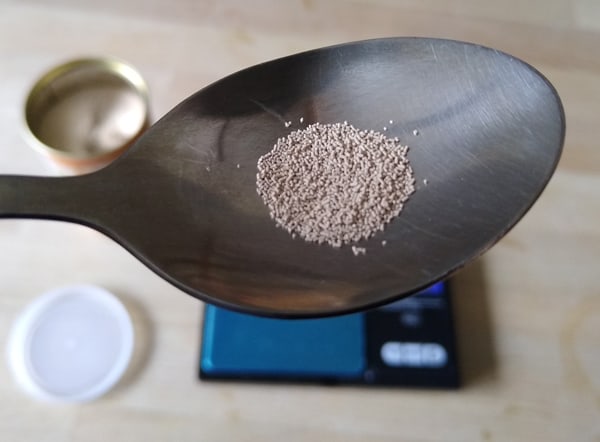
Be sure to check ouy my Neapolitan pizza dough calculator here for more information on how much yeast to use.
Another option is to use a longer prove. Not only does this lead to more flavour in the dough but it also makes for a more forgiving prove. Pizza dough that proves slowly takes longer to overprove.
Feel free to check out my Authentic Neapolitan 24 hour pizza recipe here. For a more detailed view of the process, take a look at my Neapolitan pizza school series. I show every step along the way, including videos.
For pizza beginners (or anyone for that matter), I recommend practicing a consistent recipe and keeping a close eye on how your pizza dough proves. This will help you to understand the proving process and will also help you to recognise how far the dough is from being ready.

This will make knocking back second nature. You’ll instantly be able to tell when dough is over proved and you’ll know exactly what to do. In addition, you’ll find it easy to asjust the recipe for next time if required.
There is one case in which knocking back cannot help over proofed dough. This is when your pizza dough has risen and then deflated on it’s own.
In this case, the dough has over proofed too much and unfortunately, it probably won’t rise again, even if it’s knocked back. To save the dough you would have to add more yeast, which is very difficult (almost impossible) to do at this stage. Unfortunately, you would probably be better off starting again.
The good news is that dough rarely reaches this point and overproved dough can almost always be saved (by knocking back).
But if you find this is happening to you regularly, then it is fairly easy to fix for next time. The problem is almost always using too much yeast. Next time, keep your process the same but reduce the yeast (maybe by half).
This is one of the reasons why I recommend a long prove recipe (24 hours). Long proves are much more forgiving whereas short proves (less than 8 hours) can be uncontrollable at times.
Be sure to check out my pizza dough calculator to give you an idea of how much yeast to use for long proves (8 – 24 hours).
Knocking back is so easy. It’s literally just sqeezing air out of overproofed dough. The yeast does the rest of the work and saves the dough for you.
Learning about knocking back could be the final piece in your pizza puzzle. I know for me it was a bit of a revelation.
I used to be so concerned with the amount of yeast and the temperature of the dough. But I found it almost impossible to control the prove, there’s just so many variables.
And I used to worry about over proofing. As a result, most of my dough was under proofed. I couldn’t make pizza that was light and airy.
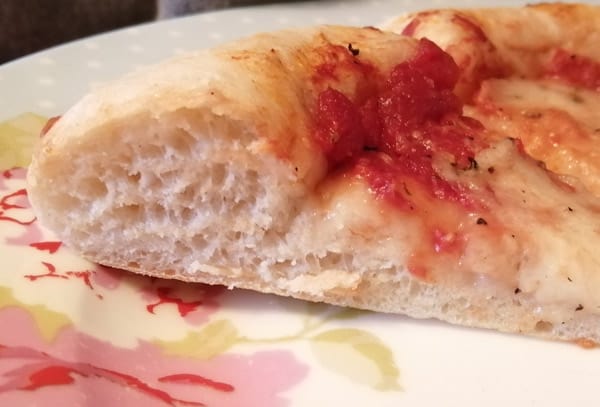
But when I learned about knocking back, I found that I could use a little extra yeast to ensure a good prove. Then I could simply knock the dough back if it was over proofing. I still use the technique to this day.
I think many people turn to proving in the fridge in order to gain control. But once you understand knocking back, room temperature proving becomes easy. And you may find your dough is better as a result.

Since I’ve used knocking back as a tool, I’ve only used the fridge for left over dough (overnight). I can remove the refrigerated dough the next day and knock it back if required. Then I can let it prove again at room temperature and use it as normal. Easy!
Hopefully this article has helped to clear some things up for you. If you have any questions feel free to leave a comment below. I always answer as quickly as I can.

Now let’s get making pizza dough!

I’m Tom Rothwell and I’m super passionate about all kinds of homemade pizza! In the last few years I've been on a quest to find the perfect pizza. Now I'm sharing what I've found out with the world!

If you're interested in hiring me for your event in the UK, feel free to check out my website with the link below.
Pizza Catering
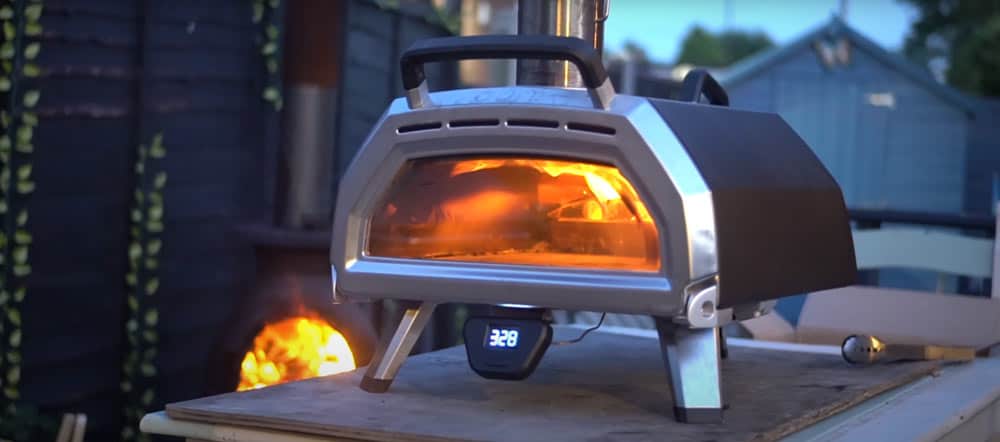
I often get asked what type of oven I use for my pizzas. Well, I use a pizza oven made by a company called Ooni.
The range of pizza ovens that Ooni offers is just brilliant. They cover all bases, and all price points. There's affordable and portable models such as the Fyra 12 Pizza Oven and then there's state-of-the-art models such as the Karu 16 Pizza Oven pictured below.
In all honesty, I would say that the oven makes a huge difference. If you're looking to make authentic Italian pizza, a pizza oven is a must.
By clicking the link below and purchasing from Ooni, you would be supporting this website. I've been using their ovens for a long time now and I wouldn't recommend them if I didn't believe in their products.
Time to make some amazing pizza!

I’m Tom Rothwell and I’m super passionate about all kinds of homemade pizza! In the last few years I've been on a quest to find the perfect pizza. Now I'm sharing what I've found out with the world!

If you're interested in hiring me for your event in the UK, feel free to check out my website with the link below.
Pizza Catering
I used your dough calculator on my last cook. The flour was Caputo chefs and the ADY amount was .1g with 58% hydration.
I had a good rise after 24 hours and created 3 balls with one to use that night. With the other 2 I put one in the fridge and froze one.
I didn’t have any problem with the first dough. The second, however, after 3 days in the fridge, really lost its shape. I didn’t know about over proofing at that time hence didn’t try knocking back.
The curious thing was that this dough seemed much easier to stretch that the first same day dough. The strength seemed good. Would appreciate hearing your thoughts.
Hi Albert, thanks for the question. Dough does still prove in the fridge, albeit very slowly. So it is possible for your dough to overprove in the fridge.
In general, I wouldn’t recommend leaving dough in the fridge for 3 days as dough loses it’s strength over time. I would say that about 2 days is the limit with most flours. “Caputo Pizzeria” flour is typically recommended for 24 hour proves, but in my experience it can handle 48 hours.
Having said that, your dough may have been fine to make pizza with. Just be sure you check on the dough from time to time and you can always knock it back if needed.
Also, if you intend on doing long proves in the fridge, you could look at getting a flour for the purpose. Caputo have a flour called “Caputo Saccorosso” which is specifically designed to be used for long proves at cold temperatures.
At the end of the day, you can experiment and see what works for you. But personally, I would not recommend going about 48 hours prove where possible. More than this and your dough will almost ceratinly become weaker and harder to shape. It will also take on more of a sour flavour (a bit like sourdough) which some people like and others don’t.
Hope this helps. Good luck!
Hi Tom, I’ve generally followed the formula and the dough has been great, but today it has turned out to be very sticky. I’ve balled up now and it is still sticky and I’m hoping that when I use some additional flour to shape it that that will fix the problem. But for now, very hard to work with sticky dough. Appreciate your views. Thanks, Mike.
Hi Mike, yes sticky dough can be challenging to work with. There’s nothing wrong with using a little flour if your dough demands it. When this happens, I tend to take note and decrease the hydration of the dough by maybe 1-3% next time (assuming I’m using the same flour). Good luck!
My pizza dough doubled in size on the counter (1-1.5hr). I then made into 250g balls by book folding them. Popped them into containers into fridge to make pizza with tomorrow.
A couple of hours later the dough was popping out of container, pushing up the lids. I have put them into larger Tupperware containers back in fridge.
What does this mean? Are they over proofing? How should I treat them tomorrow? Knock back, reshape and leave out on counter a few hours before using?
Hi Angela, yes, it sounds like your dough is over proving but your plan sounds good. I would knock then back as soon as possible before getting them back in the fridge.
Your dough shouldn’t overproof in the fridge but I’d check on it every now and again to make sure.
Ensure your dough is at room temperature before making pizza, probably 3 or 4 hours out of the fridge should be fine. But the dough must still be tightly covered at this stage or it will dry out.
Hope this helps and good luck! It sounded like were on the right track anyway.
Hi, How long can pizza dough be stored in the fridge? And, could I freeze dough for another time? How long are the storage times before it will need to be discarded?
I love your pizza recipes!
Thank you!
Pam E
Hi Pam, thank you for the question. Once you’ve knocked the pizza back, you should be able to store it for between 24 – 48 hours in the fridge.
I would recommend checking on the dough though from time to time as you may need to knock it back again to prevent it from overproving in the fridge. 72 hours may be possible in the fridge but you risk losing too much strength for shaping in your dough.
In terms of freezing, I would recommend doing this immediately after balling so that you can prove the dough again once it has defrosted. I wouldn’t like to recommend a particular storage time in the freezer as I haven’t tested this extensively.
Having said that, 2-3 months seems like a common freezing time for pizza dough.
Hope this helps! Thanks
I can’t thank you enough for the tips on repairing an over proved pizza dough! You’re my hero of the day. 🫡🇺🇸
You have created a wonderful pizza making site as well, my only regret is that I didn’t find it sooner.
That’s very kind of you to say so, thank you. Good luck on your pizza making journey!
I am a commercial baker. We don’t use prove or proving terms. Dough gets proofed, over proofed, etc. fyi
Hi Jim, you must be an American! In the UK, the verb is to prove and the noun is proof. Hope this helps!